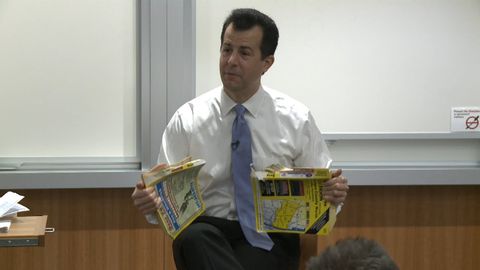
字幕と単語
計算思考-ビジネスリーダーのためのコンピュータサイエンス2016 (Computational Thinking - Computer Science for Business Leaders 2016)
00
Chris Lyu が 2021 年 01 月 14 日 に投稿保存
動画の中の単語
time
US /taɪm/
・
UK /taɪm/
- n. (u.)(音楽の)拍子 : テンポ;(時計が指し示す)時刻 : 時間;時間;(ある出来事が起きる)時 : 時点;時;時代 : 時期;時間;所要時間
- v.t.(音楽の)リズムをとる;(~するのに)ふさわしい時を選ぶ;時間を計る;(出来事の最適な時間や時期を)決める
A1 初級TOEIC
もっと見る turn
US /tɚn/
・
UK /tɜ:n/
- v.i.~歳になる;(変って)~になる : 変化する
- v.t./i.曲がる;向きを変える
- n.(道路の)曲がり角;(順番に回ってくる)担当 : 当番;順番;(予期せぬ突然の)変化
- v.t.(ものを)ろくろ(旋盤)にかけて作る
A1 初級
もっと見る エネルギーを使用
すべての単語を解除
発音・解説・フィルター機能を解除
